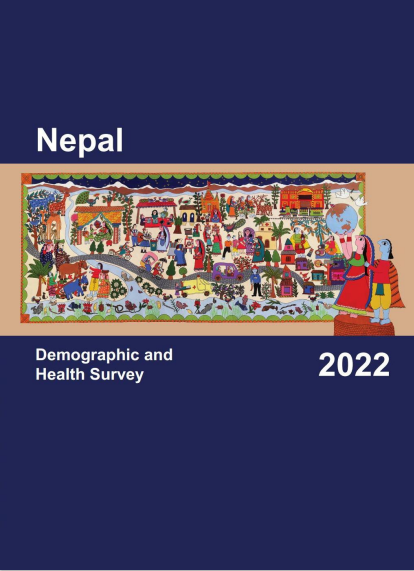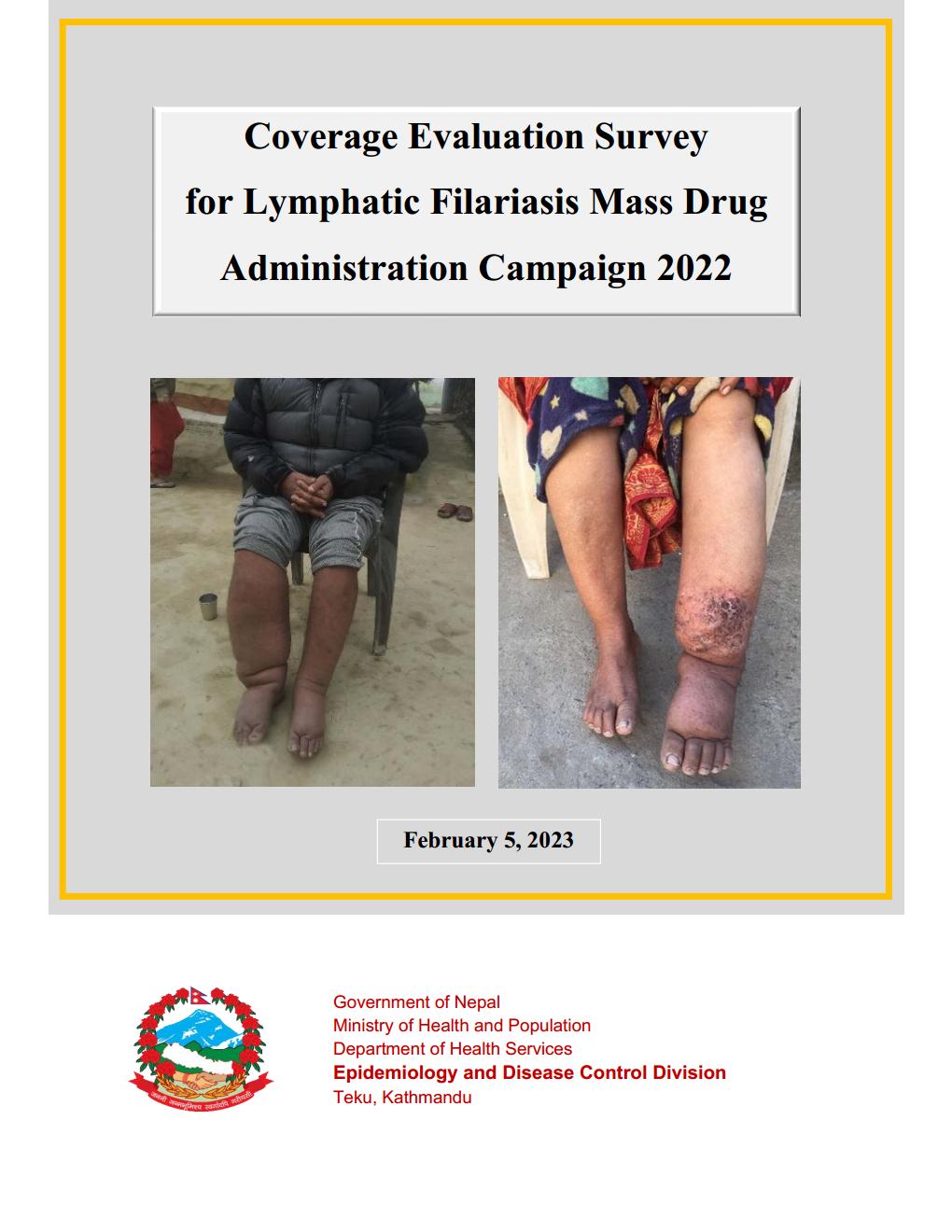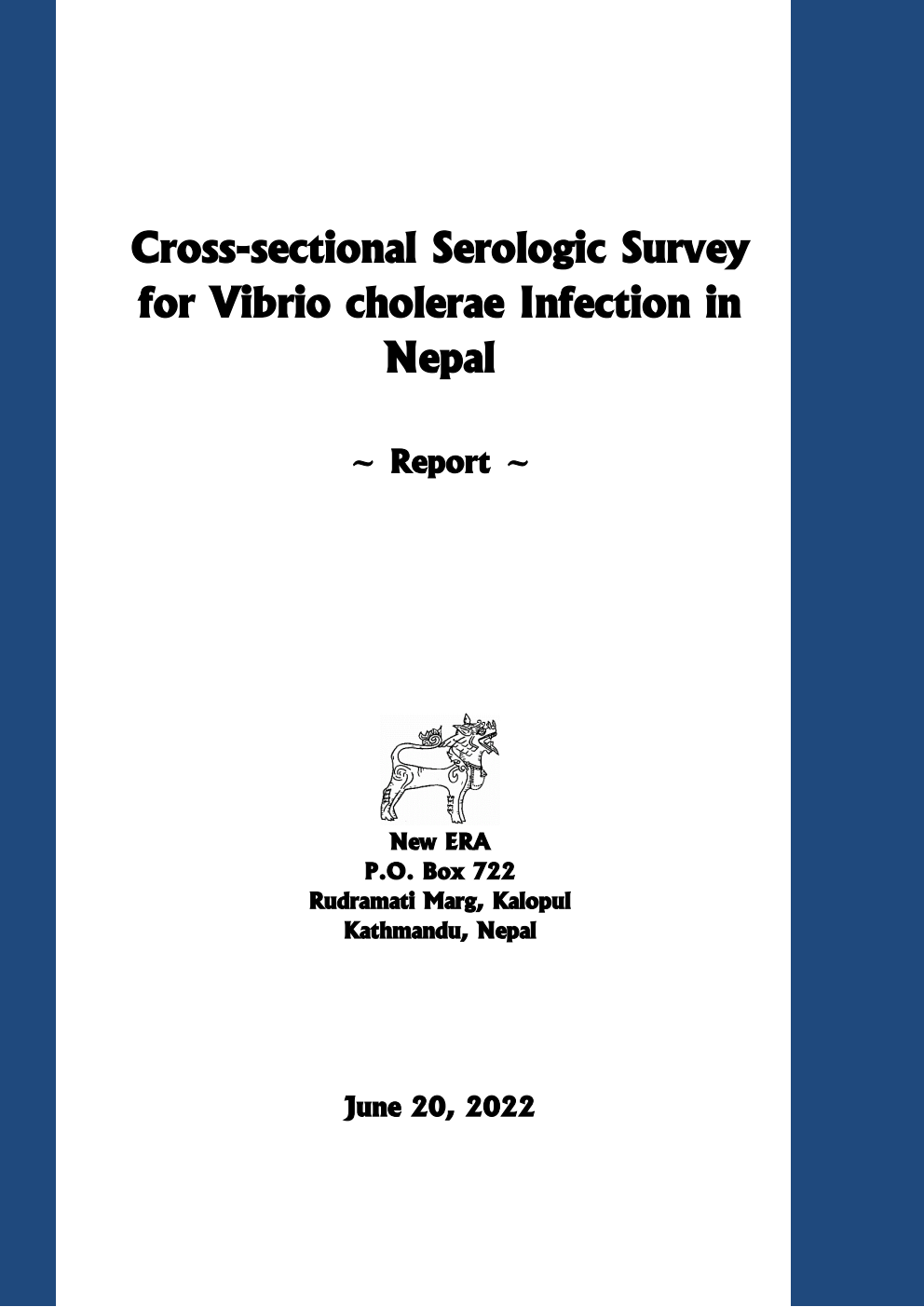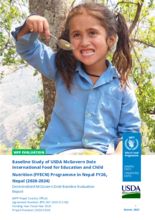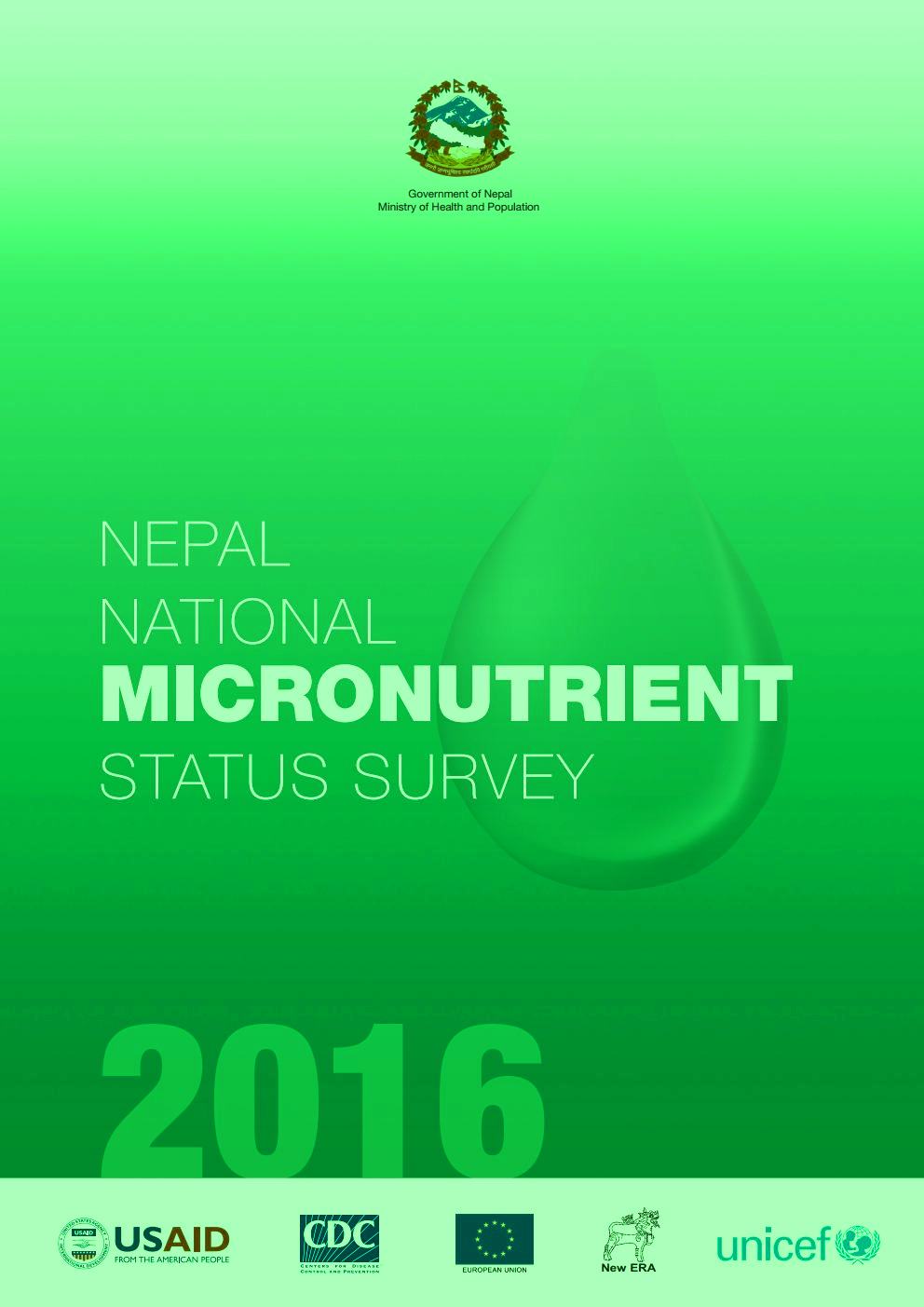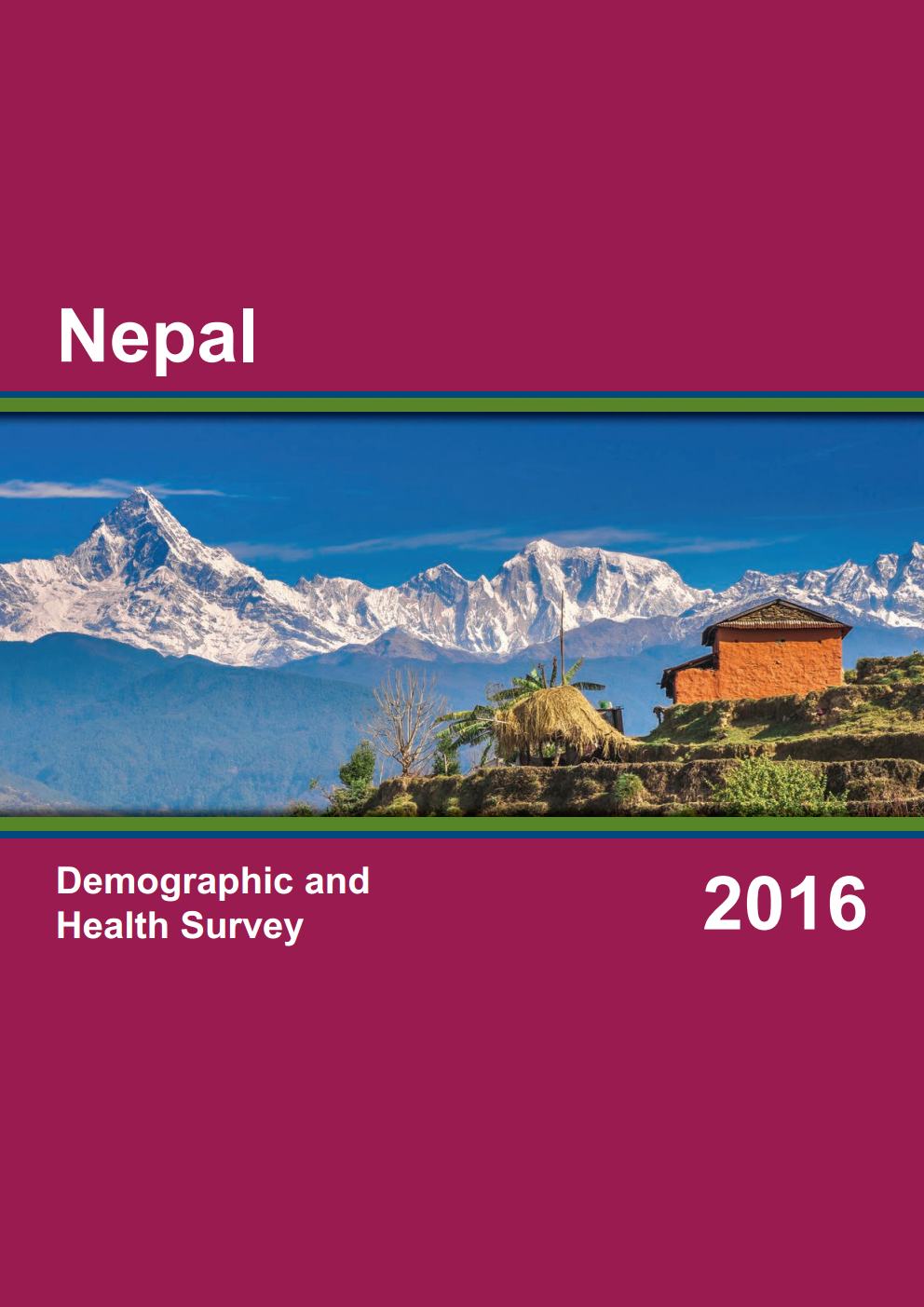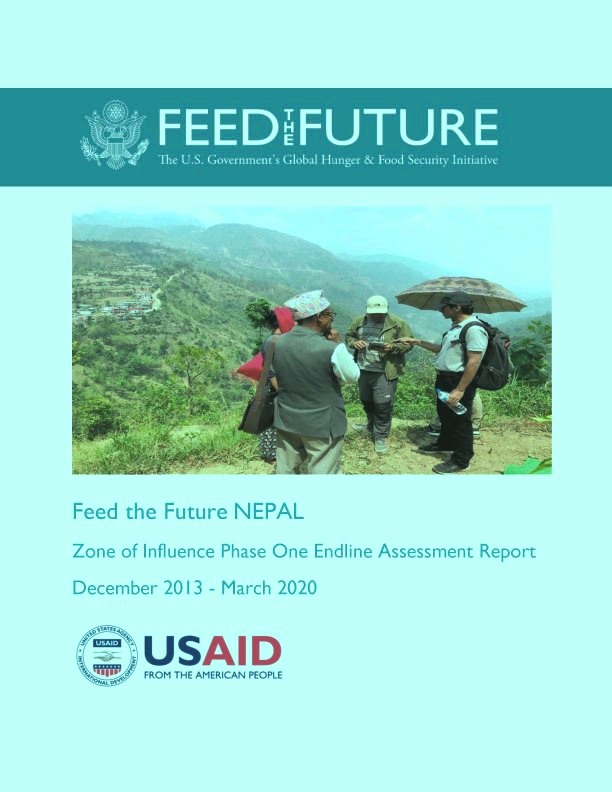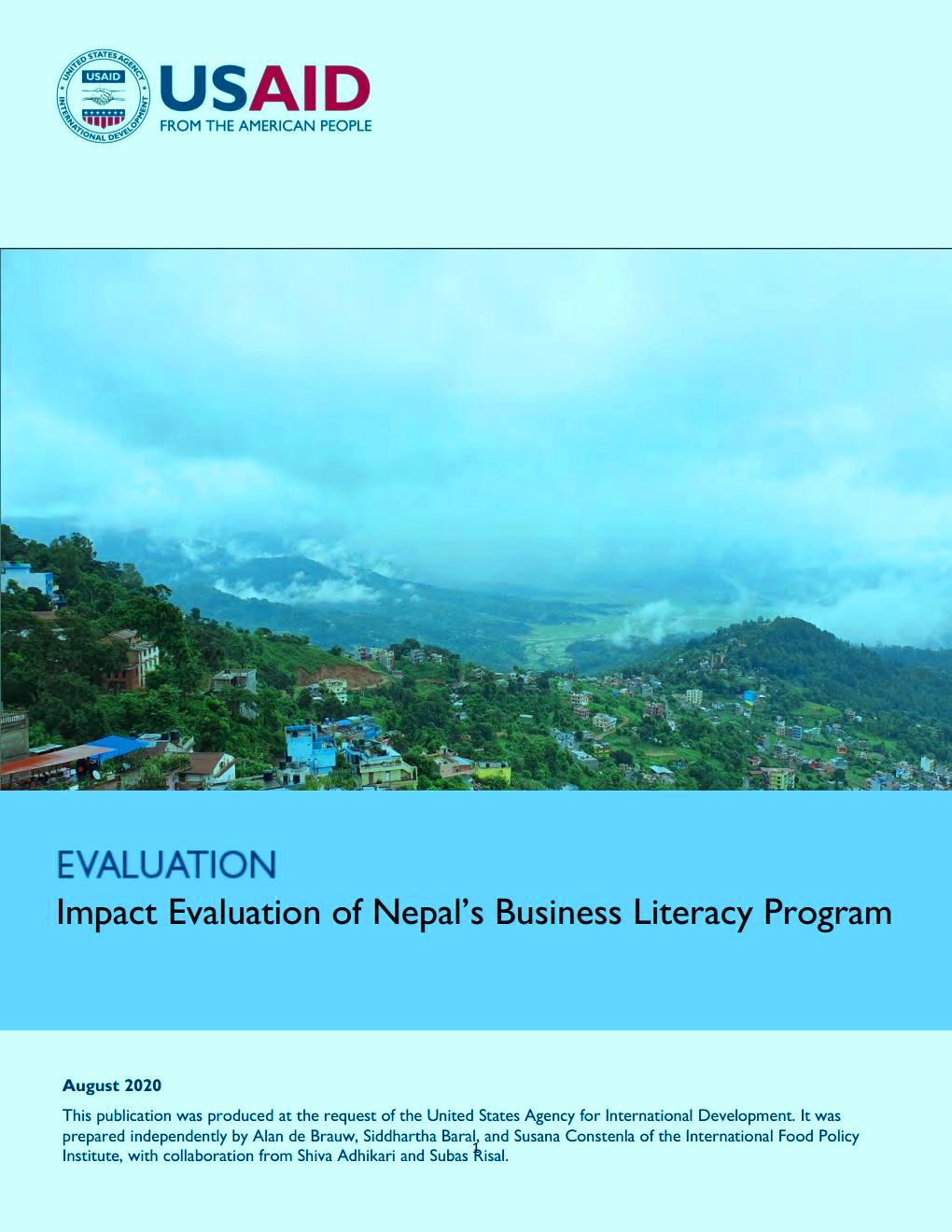Report Type: Nutrition
Coverage Evaluation Survey for Lymphatic Filariasis Mass Drug Administration Campaign, 2022
In 2017, WHO recommended an alternate strategy to accelerate Lymphatic Filariasis (LF) elimination using a triple drug regimen, Ivermectin, diethylcarbamazine (DEC) and Albendazole (IDA) for mass drug administration. Following this recommendation, triple drug regimen for endemic districts was adopted in 2019. EDCD introduced triple drug regimen in five districts (Morang, Kapilvastu, Dang, Banke, Kailali) from 2022. This survey estimated mass drug administration coverage, validate reported coverage rates and identify reasons for non-compliance. The survey also detected problems with the supply chain and distribution systems (programs reach), as well as measured coverage in specific population.
Suaahara Annual Monitoring Survey- Year 6
With the aim to reduce the prevalence of stunting, wasting and underweight among children under five years of age and to reduce the prevalence of anemia among women of reproductive age 15-49 years and children 6-59 months of age, USAID- funded multisectoral nutrition program that aligned with Nepal’s Multisector Nutrition Program was implemented in all communities of 42 of Nepal’s 77 districts from April 2016 to March 2021. To assess the progress of the Suaahara II project, annual monitoring surveys were carried out every year.
SII Annual Monitoring Survey was a quantitative survey design. The first, second and third SII Annual Monitoring Surveys were also conducted by New ERA in the year 2017, 2018 and 2019. SII Annual Monitoring Survey year six was the last annual monitoring survey of SII and it interviewed mothers of index child (0-59 months old) and followed up adolescents from 2017 survey.
Suaahara Endline Evaluation Survey 2022
Suaahara Endline Evaluation Survey was a quantitative study. Using a cross-sectional design, this survey measured the effects of program interventions on pre-selected regions or individuals with non-random allocation to intervention packages and control groups. A multi-stage cluster sampling approach was employed in this survey to head of household, mothers of children under 5, women aged 15-49, FCHV and health facility from four intervention districts (Darchula, Syangja, Rupandehi and Sindhupalchowk) as well as four control districts (Jumla, Tahahu, Chitwan and Ramechhap).
This endline evaluation survey assessed whether Suaahara reduced maternal and child under-nutrition and improved household behaviors related to health, nutrition and child under WASH, as well as whether Suaahara interventions improved the health services.
Enhancing Cholera Control in Nepal (ECHO-N)
The survey estimated the sero-incidence of recent Vibrio cholera O1 infection in Nepal using cross-sectional serologic markers. The study assessed correlation between self-reported diarrheal symptoms and Vibrio cholera immunological markers in individuals; conducted geospatial analysis to identify priority intervention areas (i.e., cholera hotspots); assessed correlation between acute watery diarrhea surveillance data in the national reporting system and estimated recent incidence of Vibrio cholera infection in geographically defined areas. New ERA conducted national representative cross-sectional survey to collect risk factors associated with diarrheal diseases, and collected serum sample for laboratory testing.
Baseline Survey of USDA McGovern-Dole International Food or Education and Child Nutrition Programme FY, Nepal (2020-2024)
The objective of this survey was to establish baseline indicator for (PMP) Performance Monitoring Plan. The study provided a situational analysis before the project begins, and the context necessary for the midterm and end-line evaluations to assess the project’s coherence, relevance, effectiveness, efficiency, sustainability, and impact. The study also explored the factors contributing to the literacy achievement of school-age children besides school meals and standard academic curriculum.
Nepal National Micronutrient Status Survey 2016
This is the second survey of this kind after 1989 NMSS. The overall objective of this survey was to assess the micronutrient status among the representative populations in Nepal. Specifically the study assessed vitamin A, iron, folic acid, iodine, zinc and condition of anemia. The survey also collected information on anthropometry, infectious diseases (malaria, Soil Transmitted Helminths, H. pylori visceral leishmaniosis), blood disorders, and markers of inflammation. Additionally the survey provided information on process and outcome indicators of priority for national supplementation and fortification intervention and other key nutrition interventions in the country.
Nepal Demographic and Health Survey 2016
This survey is the ninth in a series of national-level population and health surveys and the fifth comprehensive survey conducted as part of the Global Demographic and Health Surveys (GDHS) program. The main objective of this survey is to generate recent and reliable information on demographic and health situation of Nepal. Specifically the study collects and calculates the data on fertility rates, contraceptive knowledge and practice, reproductive health of women; infant and child mortality, maternal and child health, Domestic Violence and knowledge of HIV/AID/STD. The study also assesses the nutritional status, anemia, health care utilization of women and children. It was designed to collect demographic and health information from a nationally representative sample to provide information at the national and sub-national level.
The Feed the Future 2019 Nepal Zone of Influence (ZOI) – Endline Survey
The Feed the Future (FTF) program, led by USAID was implemented in 20 food insecure districts of western, mid-western and far-western regions, Nepal to reduce poverty, and under nutrition through accelerating growth of the agriculture sector by addressing the root causes of under nutrition and reducing gender inequality. This study was designed to determine significant change over time on key outcome and impact indicators by assessing agriculture productivity, daily per capita income, nutrition status, prevalence of poverty, resilience, women’s empowerment, dietary diversity, appropriate feeding practices, and hygienic environments improvement.
Impact Evaluation of Nepal’s Business Literacy Program
Business Literacy Program (BLP) is a component of USAID Knowledge-Based Integrated Sustainable Agriculture and Nutrition (KISAN) Project. The main aim of BLP was to enhance key skills with a year-long training program to strengthen literacy and numeracy, advantage agricultural market, entrepreneur knowledge and capabilities among disadvantaged ethnicities, women, or youth people aged 15 years and up of KISAN households. This study was to examine the impacts of the training on improvements in knowledge of life skills. The study assessed progress changes in knowledge, attitude and behavior on health and sanitation, diet habit, involvement in financial activities, market decision, and empowerment household decision making.



